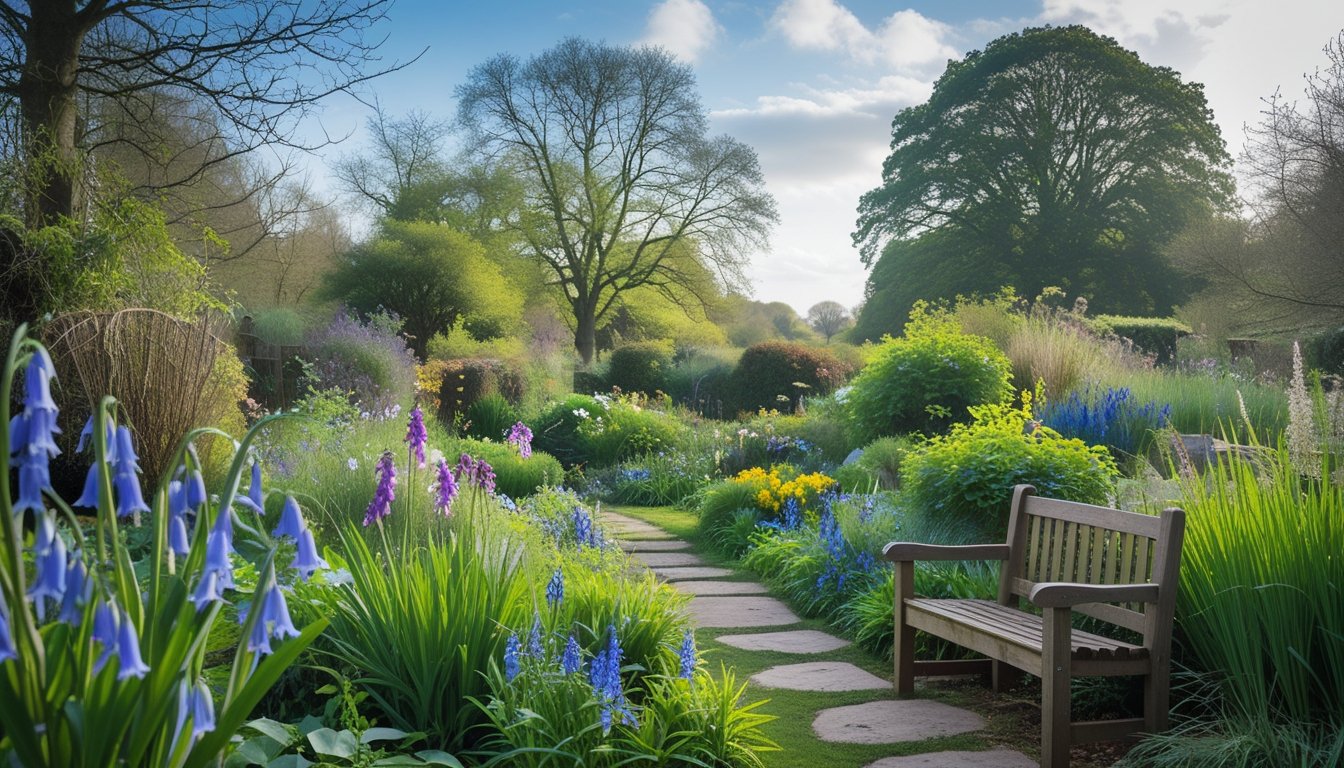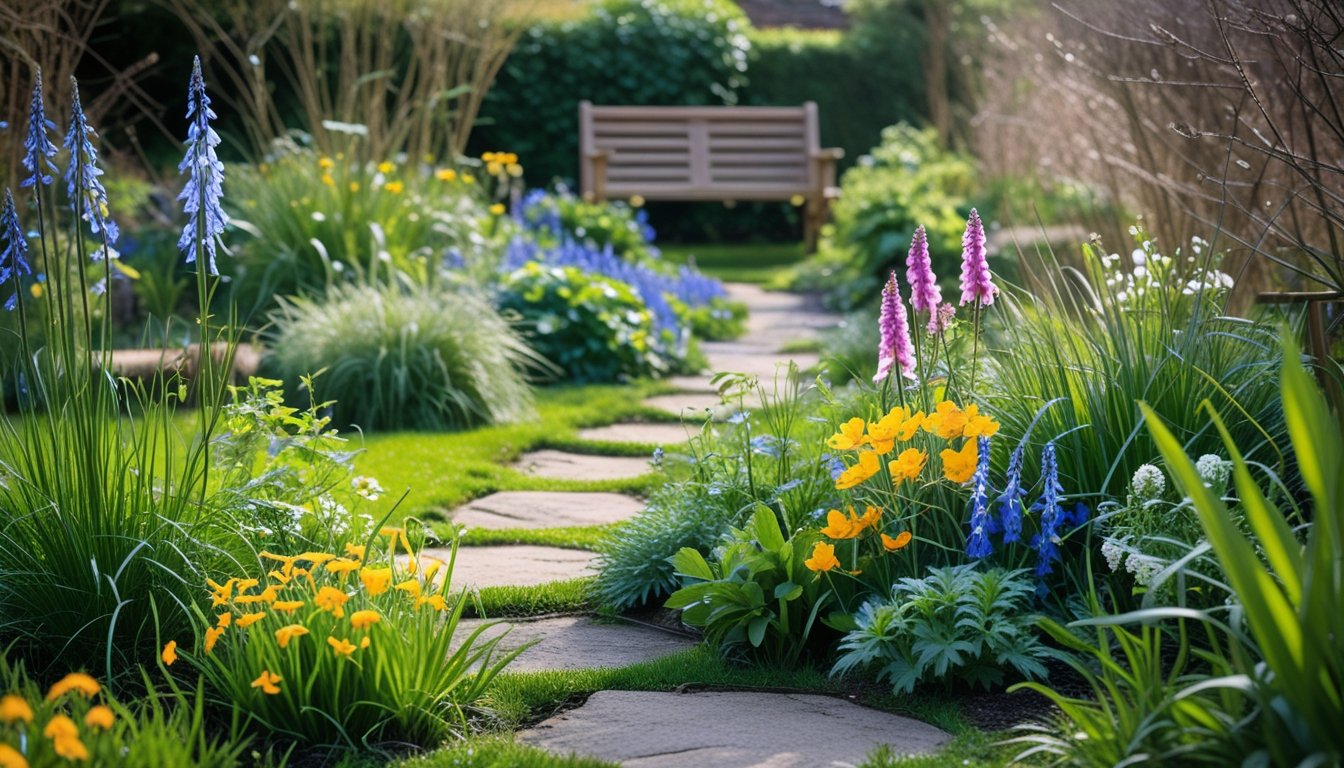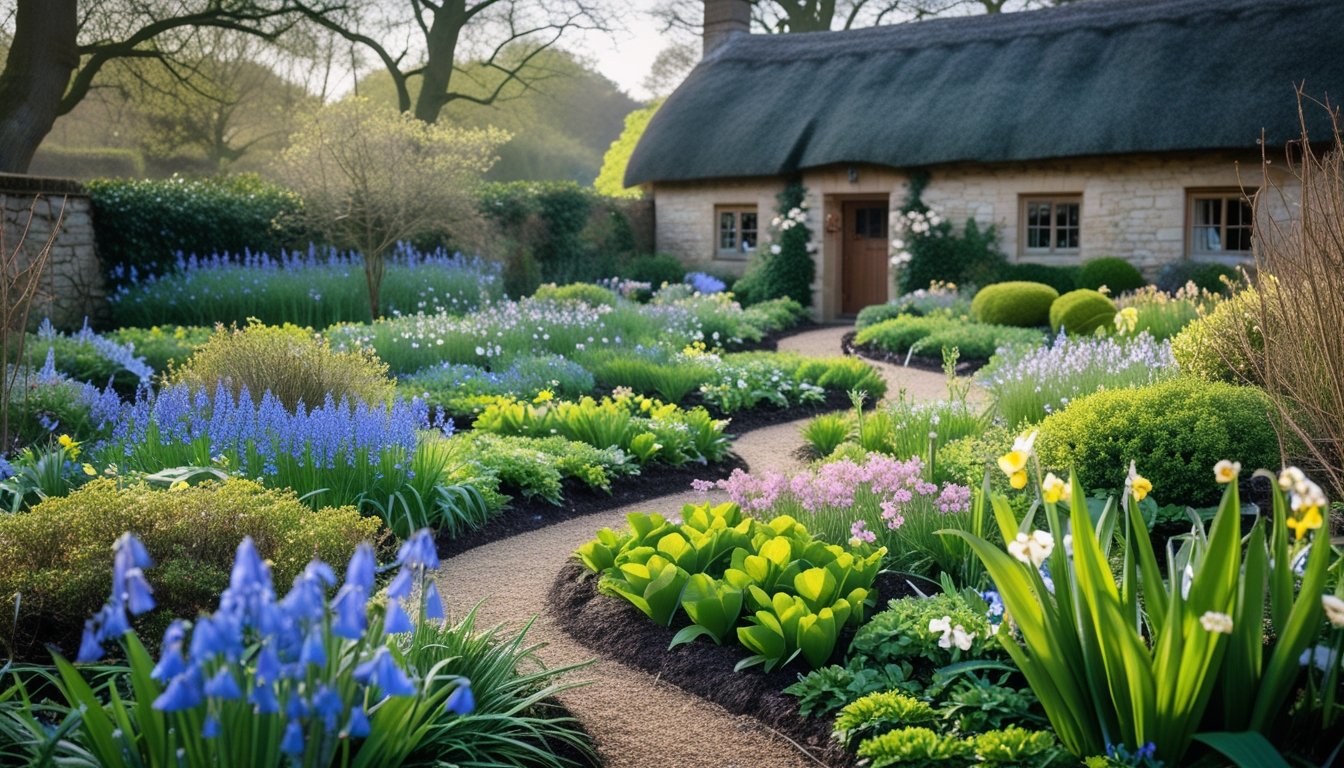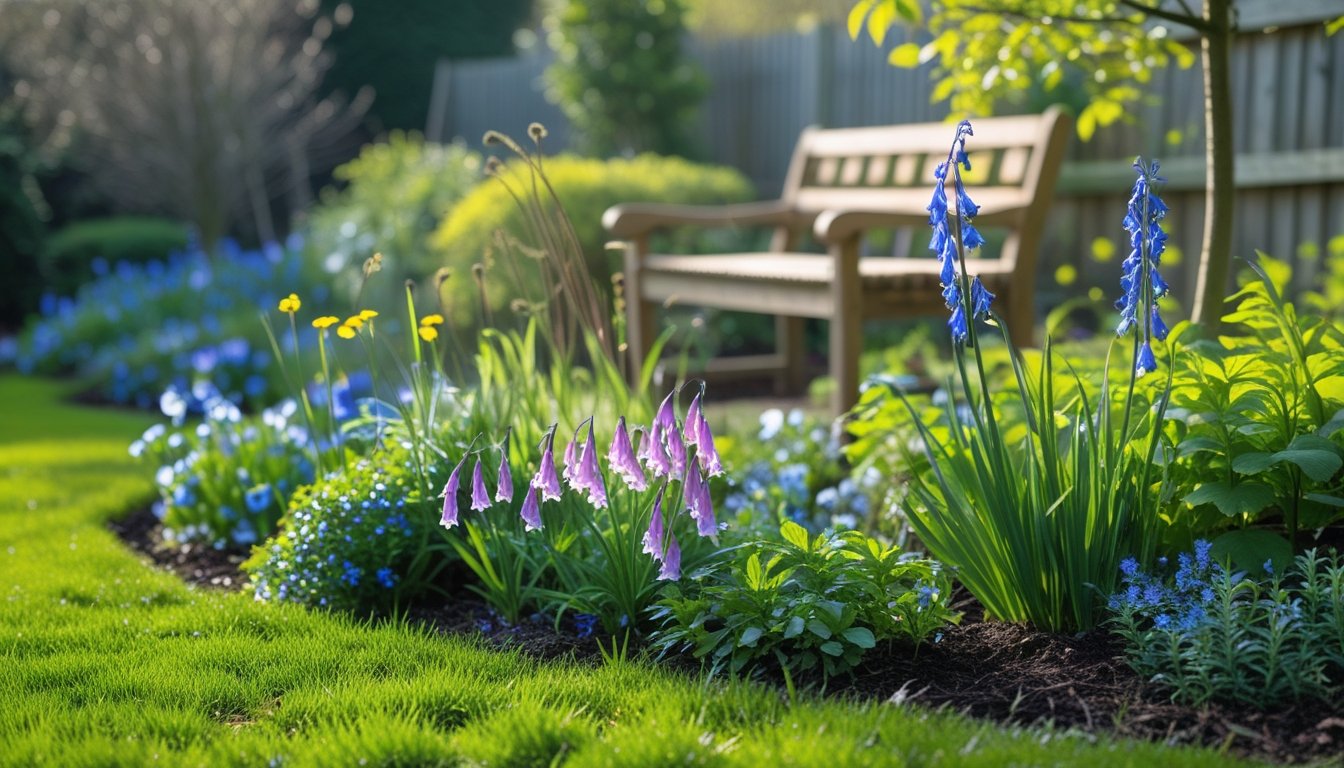Late updated: 24 Oct 2025 15:10
Written by: Emily Thornton
Maximising Garden Beauty With Native UK Seasonal Plants: A Comprehensive Guide
In the pursuit of garden beauty, native UK seasonal plants offer a vibrant and sustainable solution. By choosing plants that naturally thrive in our climate, we can create lush and visually dynamic gardens that require minimal maintenance and support local biodiversity. Implementing native plants not only enhances the aesthetics of our gardens but also provides crucial habitats and food sources for local wildlife.

Embracing native flora allows us to celebrate the changing seasons with varied colours and textures. Each season unveils a new spectacle, from the fresh greens of spring to the rich hues of autumn. This ever-changing landscape keeps our gardens lively and engaging throughout the year, offering something unique for every visitor.
By carefully selecting and planning our plantings, we can ensure that our gardens remain beautiful and thriving. It's about more than just aesthetics; it's an opportunity to contribute to a healthy ecosystem and promote native biodiversity. Our shared landscape becomes a tapestry of life, weaving together the needs of people and nature.
Key Takeaways
- Native UK plants enhance garden beauty and biodiversity.
- Seasonal plants provide a dynamic and changing landscape.
- Careful planning ensures a thriving, low-maintenance garden.
Key Benefits of Native UK Seasonal Plants for Garden Beauty

Native UK seasonal plants offer unique advantages for any garden. These plants not only bring year-round colour but also bolster biodiversity and improve soil health. This results in a stunning, sustainable garden space that supports local ecosystems while needing fewer resources.
Providing Year-Round Colour and Interest
Native plants can dramatically enhance the visual appeal of a garden throughout the year. Wildflowers like bluebells, primroses, and foxgloves bloom in spring, adding vibrant hues. In summer, plants such as heather and harebells continue the display, with their rich colours attracting pollinators.
Autumn presents its own spectacle. Hardy shrubs like hawthorn provide red berries, while the leaves of native trees turn golden and crimson. Even in winter, evergreen species like holly and ivy maintain visual interest. A thoughtfully chosen mix of native plants ensures a seamless transition across seasons, keeping your garden lively and captivating all year long.
Boosting Biodiversity and Supporting Wildlife
Incorporating native plants is an excellent choice for boosting biodiversity in our gardens. These species have co-evolved with local wildlife, creating symbiotic relationships that benefit both flora and fauna. Pollinators, such as bees and butterflies, rely on these plants for nectar and pollen. Birds and small mammals find shelter and food within their branches and foliage.
Moreover, native plants help reduce the need for chemical pesticides by attracting beneficial insects that naturally control pests. By embracing native species, we support a diverse ecosystem that strengthens the resilience of our garden landscapes. This interconnectedness is crucial for maintaining a healthy balance in local ecosystems and protecting native wildlife.
Enhancing Soil Health and Garden Sustainability
Native plants are well-adapted to the local soil and climate conditions, requiring fewer resources to thrive. They play a vital role in enhancing soil health by promoting healthy microbial activity. This can enrich the soil naturally, reducing the need for synthetic fertilisers. Deep-rooted native varieties further prevent soil erosion by stabilising the ground.
Using native plants also makes our gardens more sustainable. Their lower water requirements conserve resources, while their ability to attract beneficial organisms means less reliance on external chemicals. Overall, these plants align well with environmentally friendly gardening practices, ensuring that our gardens remain sustainable for future generations.
Planning a Seasonal Native Plant Garden in the UK

Maximising your garden's appeal can be achieved by carefully selecting and arranging native UK plants that thrive across different seasons. Our focus is on essential plants, harmonious design, iconic features, and wildlife-friendly practices.
Essential Native Plants for Each Season
In spring, the bluebell (Hyacinthoides non-scripta) and primrose showcase vibrant colours, serving as perfect heralds of warmth. Summer brings the delicate dog rose (Rosa canina), offering both beauty and shelter for wildlife. As autumn approaches, hawthorn (Crataegus monogyna) berries provide essential food for birds.
By winter, the English oak (Quercus robur) and evergreen common ivy (Hedera helix) maintain structure and greenery. Thoughtful selection ensures continuous garden interest.
Design Principles for Harmonious Planting
A harmonious plant arrangement begins by understanding each plant's needs and growth patterns. Pair taller trees like silver birch (Betula pendula) with low-growing flowers to prevent shading. Use a mix of textures by integrating bushes, trees, and flowers.
Cottage gardens inspire us with their seemingly informal yet deliberate plant placements. Achieving balance between different species encourages diversity and sustenance throughout the year.
Incorporating Iconic Trees, Shrubs, and Flowers
Iconic species serve as captivating focal points. We can use the English oak for its grandeur and ecological benefits. Team it with honeysuckle for added fragrance and appearance.
Hawthorn and dog rose imbue history and lore into our gardens, providing both aesthetic pleasure and wildlife support. Incorporating these elements gives the garden structure and context, making it memorable and functional.
Wildlife-Friendly Features and Practices
To attract pollinators and beneficial creatures, we prioritise planting a mix of native species. Wildflower meadows create a nurturing environment, appealing to bees and butterflies. Providing habitats, like birdhouses or insect hotels, furthers this effort.
Plants such as common ivy and honeysuckle offer food and shelter, supporting insects and birds alike. These features not only enhance ecological balance but also ensure our garden thrives naturally and sustainably.
In summary, these practices guide us to craft a seasonal native garden with both beauty and ecological integrity.
Frequently Asked Questions

Our focus is on identifying native UK plants to enhance seasonal garden aesthetics, enriching local biodiversity, and selecting flora suited to the UK's climate. Various strategies can be used to ensure your garden flourishes year-round with natural beauty.
What are the best native UK plants to enhance garden aesthetics in each season?
Each season offers unique opportunities for garden aesthetics. Spring showcases the vibrant hues of bluebells and primroses. Summer brings the bold colours of wild marigolds and foxgloves. In autumn, rowan and hawthorn provide stunning foliage. Winter gardens benefit from the structural interest of ivy and holly.
How can indigenous seasonal flora contribute to local biodiversity and garden health?
Indigenous plants are well-adapted to local conditions, providing essential habitats and nourishment for native wildlife. By incorporating these species, we support pollinators like bees and butterflies. They also promote healthy soil and prevent erosion, contributing to a robust garden ecosystem that thrives naturally.
What considerations should be made when selecting native plants for a garden’s design?
When selecting native plants, we must consider soil type, sunlight exposure, and moisture levels. It's crucial to match plant types with garden conditions for them to thrive. Understanding the plant’s growth habits and spacing requirements ensures a harmonious and sustainable garden design.
Which perennial species thrive in the UK climate and provide year-round visual interest?
Several perennial species offer year-round interest. The evergreen Cornish heath adds colour, while the common yarrow attracts pollinators. Additionally, cowslips and ox-eye daisies bring a relaxed, wild feel, ensuring the garden remains vibrant even in colder months with varied textures and forms.
How do flowering times of native UK plants affect garden beauty across seasons?
Flowering times vary, influencing the garden's aesthetic throughout the year. Carefully planning and staggering bloom periods ensure continuous colour and interest. For example, early bloomers like celandines transition to midsummer displays of lavender, maintaining an ever-changing yet seamless tapestry of nature's colours.
Could you recommend a planting guide to achieve a balanced and beautiful garden with native species?
To achieve balance, we recommend a seasonal approach, choosing a diverse mix of perennials and annuals. Focus on creating layers with varying heights and textures. Observe existing natural landscapes for inspiration, which can guide the placement and selection of native species to enhance your garden’s beauty.
